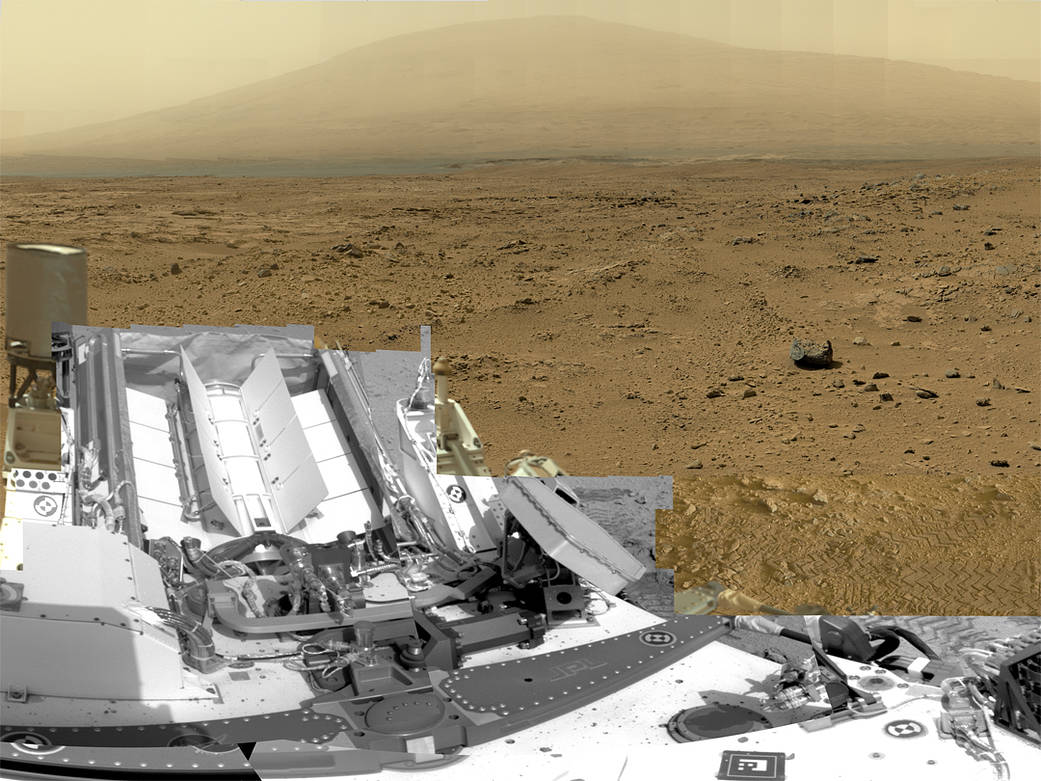
This full-circle view combined nearly 900 images taken by NASA’s Curiosity Mars rover, generating a panorama with 1.3 billion pixels in the full-resolution version. The view is centered toward the south, with north at both ends. It shows Curiosity at the “Rocknest” site where the rover scooped up samples of windblown dust and sand. Curiosity used three cameras to take the component images on several different days between Oct. 5 and Nov. 16, 2012.
Viewers can explore this image with pan and zoom controls at http://mars.nasa.gov/bp1/ .
This first NASA-produced gigapixel image from the surface of Mars is a mosaic using 850 frames from the telephoto camera of Curiosity’s Mast Camera instrument, supplemented with 21 frames from the Mastcam’s wider-angle camera and 25 black-and-white frames – mostly of the rover itself – from the Navigation Camera. It was produced by the Multiple-Mission Image Processing Laboratory at NASA’s Jet Propulsion Laboratory, Pasadena, Calif.
This version of the panorama retains “raw” color, as seen by the camera on Mars under Mars lighting conditions. A white-balanced version is available at http://photojournal.jpl.nasa.gov/catalog/PIA16918 . The view shows illumination effects from variations in the time of day for pieces of the mosaic. It also shows variations in the clarity of the atmosphere due to variable dustiness during the month while the images were acquired.
NASA’s Mars Science Laboratory project is using Curiosity and the rover’s 10 science instruments to investigate the environmental history within Gale Crater, a location where the project has found that conditions were long ago favorable for microbial life.
Malin Space Science Systems, San Diego, built and operates Curiosity’s Mastcam. JPL, a division of the California Institute of Technology, Pasadena, manages the Mars Science Laboratory project for NASA’s Science Mission Directorate in Washington and built the Navigation Camera and the rover.
Credit: NASA/JPL-Caltech/MSSS

























